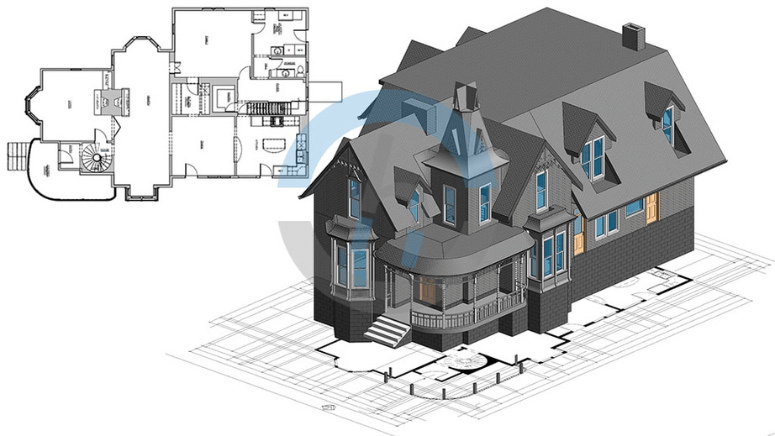Enhance Architectural Projects with PDF to Revit

In an architectural design, a high level of precision, thoroughness and efficiency is very important. During the advent of technology, architects as they search for ways to automate their operations and improve project performance don’t cease.
One of the ground-breaking achievements that has revolutionized the construction industry is the fact that PDF has been replaced by Revit. In this article I will discuss the impact of BIM in improving and enhancing architectural projects and the general efficiency.
Understanding the importance of from PDF to Revit
Very often, the architectural projects have files interchanged with different types. PDF formats are preferred for sharing or viewing designs but they do not have the sense and the interactivity needed for design automation. While Revit is a BIM software that includes many tools for architecture design, construction, and teamwork, on the other hand, it is a very powerful product.
Overview of Revit software and its significance in architectural projects
Revit software helps architects to produce smartly modeled 3D formats, which consist of building pieces, materials, and spatial connections. In contrast to classic CAD software, Revit uses a parametric modeling method, allowing designers to edit at any phase of design, and subsequently, all details self-adjust to the modification.
This is on account of the fact that flexibility of Revit increases the speed of the design process while at the same time it also enhances communication and collaboration within the project parties.
Benefits of Using PDF to Revit
The transition from PDF to Revit offers numerous benefits that can significantly enhance architectural projects:The transition from PDF to Revit offers numerous benefits that can significantly enhance architectural projects:
Streamlined workflow
Translating a PDF format about architectural models to the Revit platform makes transferring the design data much more efficient in the BIM environment. It enables a speedy approval cycle bypassing the need to enter or edit data manually and reduces market research costs.
Improved collaboration
Thanks to Revit, architects and engineers, as well as building contractors and other assorted project participants may concurrently work via real time collaboration. Working in one model, the team members would be able to approach the same problem from individual perspectives, so their dialogues and conflicts could be tracked down more efficiently and their joint efforts would be much more coordinated.
Enhanced accuracy
Arguably, Revit's parametric features typify a parametric model involving automatic updating of all affected components. As a result, the chances of incorrect applications and various mistakes decrease, bring a higher level of detail to the final project and avoid expensive reworks.
Time and cost efficiency
With Revit being able to do away with iterative tasks and applying its optimization to the task of design, architects can complete their projects quicker and on budget. This factor in effect provides companies with capabilities to implement projects on time and with budget constraint, thus the clients' satisfaction and competitiveness in the market is provided in this respect.
Future Trends and Innovations
The evolution of technology is guaranteed to be accompanied by such an advancement in the PDF to Revit conversion as tools and methodologies. Among numerous developments that could fall in this category, we may mention even attempt to spread the reading of 2D PDF's design data as well as better embedding to BIM workflows.
It could also lead to the integration of AI and once more in the conversion attempt, together with other customer insights tools.
AI and machine learning technologies are capable of disrupting current conventions of PDF to RVT conversion, which could be done by performing repetitive tasks automatically and increasing high accuracy level. However, a computer can learn from the big data sets of design files to discover the patterns and for that efficiency in conversion AI algorithms can be used to increase the accuracy.
Conclusion
Quintessentially, Guide to PDF to Revit conversion is the key to improved models in architectural projects owing to the fact that it enables modeling accuracy, amplifies collaboration, helps to integrate data, speeds up the process of changes in design, supports visualization and analysis and ultimately streamlines documentation.
Owning to Revit, which brings the power of the software to the table, architects can build apparently more effective, sustainable, and visual designs while reducing the errors and improving the final product's performance.











652cc4a8bfcb2.jpg)
